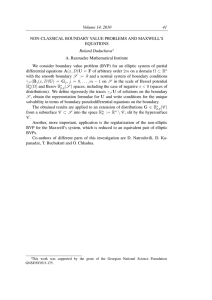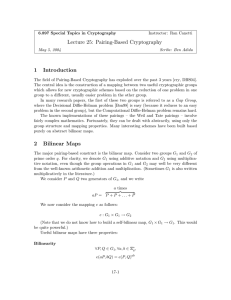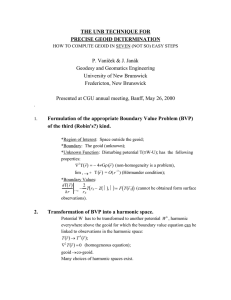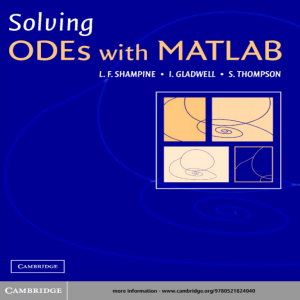Consider the following differential operator acting on a bounded open... in with and
advertisement
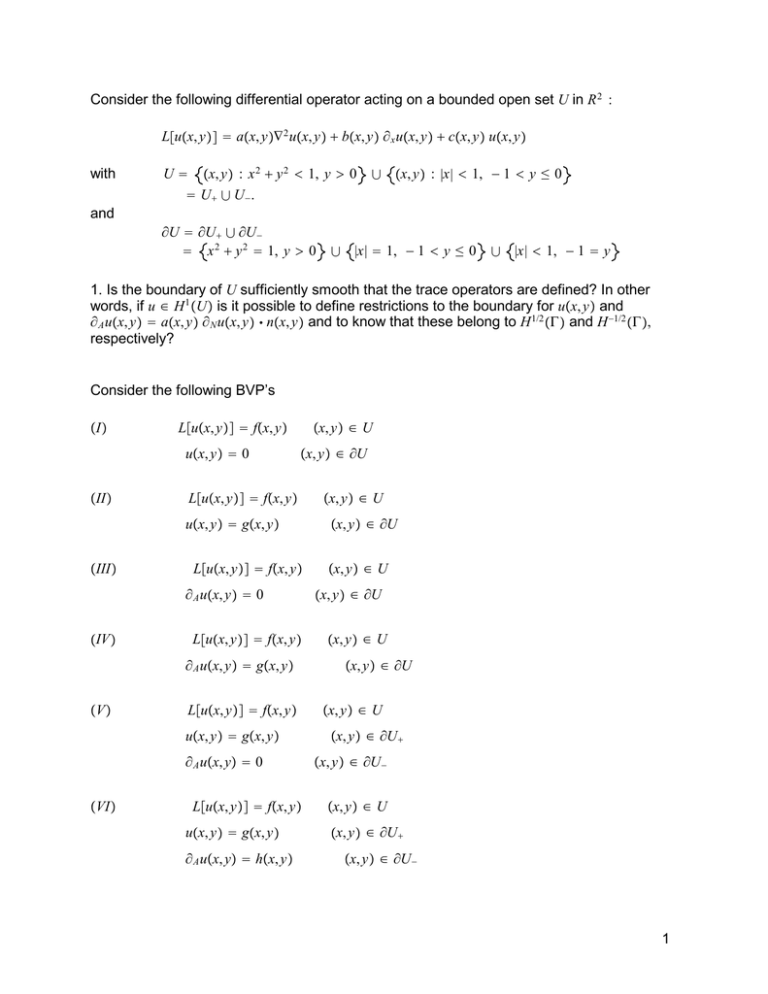
Consider the following differential operator acting on a bounded open set U in R 2 : Lux, y = ax, y∇ 2 ux, y + bx, y ∂ x ux, y + cx, y ux, y with U = x, y : x 2 + y 2 < 1, y > 0 = U+ ∪ U−. ∪ x, y : |x| < 1, − 1 < y ≤ 0 and ∂U = ∂U + ∪ ∂U − = x 2 + y 2 = 1, y > 0 ∪ |x| = 1, − 1 < y ≤ 0 ∪ |x| < 1, − 1 = y 1. Is the boundary of U sufficiently smooth that the trace operators are defined? In other words, if u ∈ H 1 U is it possible to define restrictions to the boundary for ux, y and ∂ A ux, y = ax, y ∂ N ux, y ⋅ nx, y and to know that these belong to H 1/2 Γ and H −1/2 Γ, respectively? Consider the following BVP’s I Lux, y = fx, y ux, y = 0 II x, y ∈ U x, y ∈ ∂U Lux, y = fx, y ux, y = gx, y III Lux, y = fx, y ∂ A ux, y = 0 IV Lux, y = fx, y ∂ A ux, y = gx, y V Lux, y = fx, y ux, y = gx, y ∂ A ux, y = 0 VI Lux, y = fx, y ux, y = gx, y ∂ A ux, y = hx, y x, y ∈ U x, y ∈ ∂U x, y ∈ U x, y ∈ ∂U x, y ∈ U x, y ∈ ∂U x, y ∈ U x, y ∈ ∂U + x, y ∈ ∂U − x, y ∈ U x, y ∈ ∂U + x, y ∈ ∂U − 1 1. 2. 3. 4. Give the weak formulation for each problem, specifying what is the solution space, the bilinear form and the right hand side of the weak equation Determine conditions on a, b, and c sufficient to imply that the bilinear form is coercive on the solution space. If the coefficients are assumed only to be, say continuous and positive on U, is the bilinear form still coercive? What can you conclude about the existence and uniqueness of a solution to the BVP? Is it possible to have more than one solution? In problems III and IV, are the boundary conditions incorporated into the definition of the solution space? How do you show that the boundary conditions are satisfied? How is the boundary condition in II treated differently from the boundary condition in I? How do you know it is possible to find a function G ∈ H 1 U whose restriction to ∂U equals g? 2

